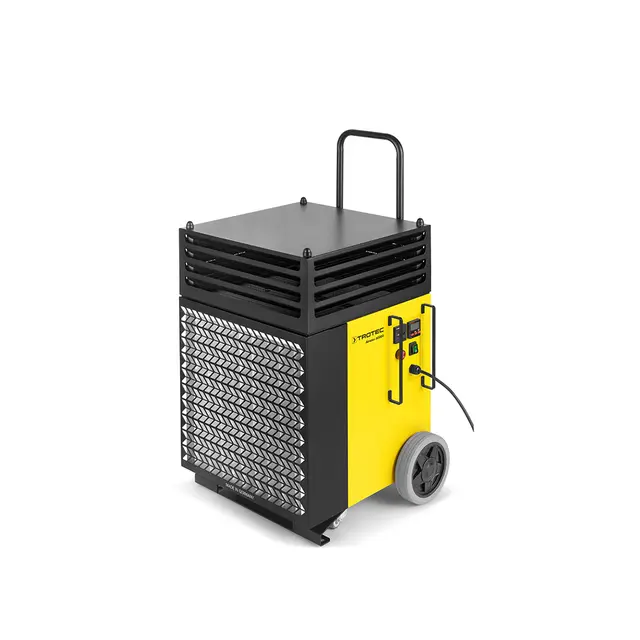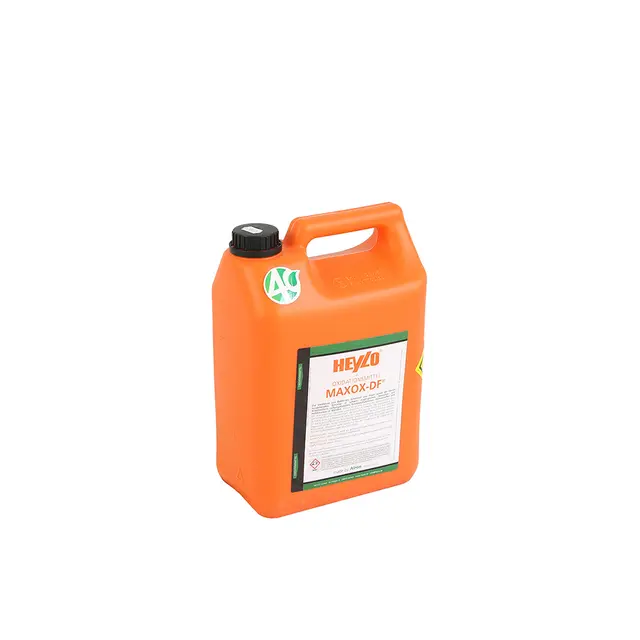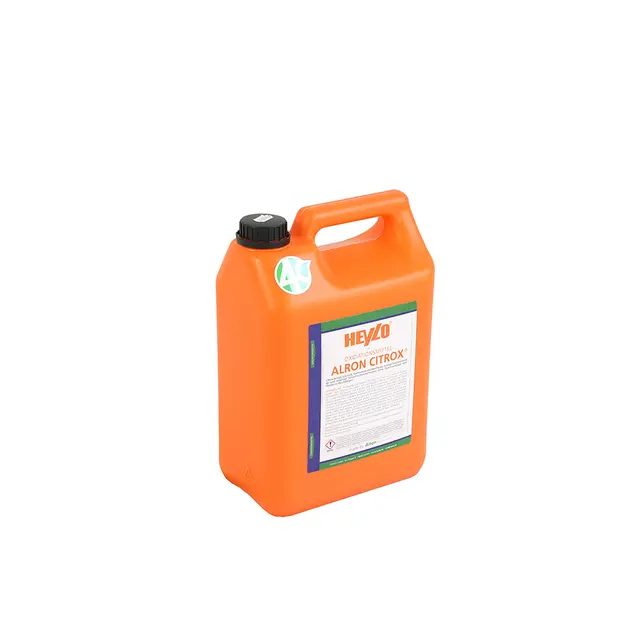Removing the smell of burning from your home after a fire

- Home
- Insights
- Air cleaning insights
- Removing the smell of burning from your home after a fire
Removing the smell of burning is a time-consuming and difficult task. Regardless of whether it is a large or small fire that was quickly brought under control – the smell of burning usually persists in furniture, textiles and even walls, floors and ceilings. With the help of special products, however, it is possible to neutralise and remove fire odours sustainably and professionally.
Why neutralise fire smells?
The smell after a fire is acrid and unpleasant and usually settles deep into materials and building structures. Even after the clean-up work and the removal of the source of the fire and affected objects, there is therefore often a smell of burning in the air. In order for the premises to be inhabited again, the unpleasant odour must be neutralised. Odour neutralisation – unlike odour masking – ensures that the molecules responsible for the unpleasant odour break down or transform into an odour-neutral substance. Many home remedies or room sprays recommended for odour control, on the other hand, merely ensure that the bad odour is masked for a short time, but does not disappear.
Odour control fire damage
Fire damage is not only about neutralising unpleasant odours, but also about protecting against substances that are hazardous to health. As environmental institutes confirm, in addition to dangerous fire gases that evaporate after the fire is over, other chemical compounds that are considered pollutants and are responsible for the smell of fire are also produced in flat fires. These pollutants pose a health risk to the occupants and the tradesmen involved in the renovation, which is why neutralising the smell of burning after a fire damage should be a top priority.
Cable fire odour
Particular care should be taken after a cable fire. Cable fires are among the most frequent causes of fires in Germany. Cable insulation, like old floor coverings, window frames and wallpaper, often contains PVC. When PVC burns at low temperatures, as is common in cable and smouldering fires, highly toxic and corrosive substances can be produced that cause a pungent odour.
What helps against smoke odour?
Several steps are necessary to remove the smell of smoke from the home after a fire. The most important and obvious step is to ventilate and shock-ventilate after the fire has been extinguished. The draught and air exchange can remove a large part of the polluted air from the affected rooms and thus prevent the smoke smell from settling in curtains, upholstery and walls. In addition, burnt objects, soot and ashes should of course be removed from the flat and disposed of as soon as they have cooled down sufficiently.
If it was only a very small fire that was quickly extinguished, you can try to eliminate the smell of smoke with home remedies. Vinegar, vinegar water and coffee powder can bind unpleasant odours to a certain extent. However, these home remedies are not very effective for large fires and persistent burning smells, as they only provide a temporary improvement but do not combat the cause of the smell.
Due to heavy smoke formation and the extinguishing water that may be used, the fire smell usually penetrates deep into walls and floors, so that new odour molecules are released again and again. If there is still water and mud in the affected rooms, it must be extracted and the rooms dried. Industrial vacuum cleaners and special building dryers are suitable for drying out water damage.
To eliminate the odour caused by the fire smell, you should then carry out a professional odour neutralisation to effectively neutralise the fire smell in all rooms and affected textiles such as curtains and upholstery. In addition, if the fire odour has penetrated deep into walls and floors and has settled there, odour remediation with special cleaning agents is necessary to combat the causes of the odour deep within the materials.
Filtration and adsorption
If the odour molecules of the fire odour are gaseous or bound to fine particles in the air, they can be filtered out by means of HEPA filters. An additional activated carbon filter in the air purifier makes this even more effective.
Removing smoke odour from the home
Odour neutralisation from fires
To neutralise the smell of burning, you should thoroughly clean the affected rooms and objects with a special cleaning agent. The cleaning agent should be alkaline and have a pH value between 9 and 13. If you can still smell the fire after this cleaning, you should carry out odour remediation as set out below.
Odour remediation after fire odour
Professional odour remediation fights the burnt smell deep inside the affected materials. Porous and absorbent surfaces such as plaster, wood, brick and concrete should be sprayed with Penetrox disinfectant or Wet Odor Control products. The other, smooth surfaces are best treated with Odox oxidiser.
For odour remediation of large or hard-to-reach rooms that have not been contaminated with soot, we recommend odour remediation by fogging with fine aerosols. For this purpose, you can use oxidising aerosols that are quickly decomposed and neutralise the fire odour (e.g. Maxox-DF), as well as dry odour remediation with DRY ODOR CONTROL. Maxox-DF and DRY ODOR CONTROL each produce a ’dry‘, fine aerosol that remains suspended in the air for a long time and decomposes the fire smell by oxidation. On the other hand, you can remedy the situation with odour-modifying aerosols (dry and moist odour remediation). These aerosols quickly mask the fire smell and encapsulate it. The encapsulated fire odour is then decomposed by slow air oxidation.
You can apply the agent for dry odour remediation (Dry Odor Control) with Pulsjet-Fogger as well as with Thermo-Fogger. The moist air remediation agent is distributed with a ULV sprayer (Ultra Low Volume sprayer) and produces a "wet" aerosol that evaporates very quickly. It works best if you aim the jet of aerosol directly at the material that is to be subjected to odour remediation.
Dry and wet odour remediation products can also be used as "air fresheners" to leave a pleasant odour sensation after the remediation. Moist odour remediation is applied with the ULV sprayer to absorbent, easily accessible surfaces, while dry air remediation with the Thermo-Fogger or Pulsjet Fogger is best used for diffuse odour dispersion in large spaces.
Checklist: How to get smoke odour out of the home?
To get smoke odour out of the flat after a fire, the following procedure should be followed:
- Open windows and ventilate extensively
- Remove burnt objects, soot, ashes, etc. from the flat
- If necessary, vacuum up extinguishing water and mud and dry out the rooms
- If the smell of burning is minimal, try household remedies (vinegar, vinegar water, coffee powder)
- Neutralise odours with an alkaline cleaning agent as an odour remover of stubborn odours
- Cleaning with disinfectant Penetrox (porous surfaces) and oxidising agent Odox (smooth surfaces)
- Odour remediation by fogging with aerosols
- Oxidising aerosols and dry remediation with Maxox-DF and DRY ODOR CONTROL – carried out with Pulsjet-Fogger or Thermo-Fogger
- Dry and moist odour remediation with odour-modifying aerosols – distribution with ULV sprayer
- Final air freshening with dry or moist odour remediation agents
Heylo disinfectants and cleaning agents ensure effective fire odour control and successful odour neutralisation.
Contact us to find the right odour control agent and the suitable fogger or sprayer quickly and easily.
Frequently asked questions about combating the smell of burning
How do you get rid of the smell of burning?
When something is burnt or, in the worst case, burnt in the home, an unpleasant and pungent smell remains. Depending on how strong the odour is and how much time it has had to settle in upholstery, curtains, furniture and walls, various measures are necessary to combat the odour. If the odour is minimal, household remedies such as vinegar, vinegar water and coffee powder can provide relief and serve as odour removers. However, if the odour is very strong and has already penetrated furniture and walls, such home remedies are not very effective.
Alkaline cleaning agents with a pH value between 9 and 13 are very suitable for neutralising odours. If even these remedies are not sufficient, professional odour remediation must be carried out deep in the surfaces of the affected flat. Surfaces should be cleaned with disinfectants and oxidants, followed by dry remediation with oxidising aerosols or moist odour remediation with odour-modifying aerosols. Aerosols can be distributed with special sprayers and foggers.
How long does fire odour remain?
Fire odour is very persistent and remains in living spaces long after a fire. These steps will help to get rid of fire odour as soon as possible:
- Frequent and long ventilation
- Quickly remove extinguishing water and burnt/scorched material
- Set up home remedies to eliminate odours
- Disinfect and clean surfaces (with oxidising agent and alkaline cleaning agent)
- Professional odour remediation with aerosols and dry or moist odour remediation agents
What binds smoke odour?
Smoke odour is caused by special odour molecules that are produced during a fire. To bind the smoke odour and thus eliminate it, home remedies can help if the odour is minimal. Vinegar, coffee powder and cat litter can bind odours to a certain extent. However, special agents are required for strong smoke odours. Professional cleaning with aerosols that mask and bind the smoke odour or decompose it will ensure the most effective removal of smoke odour in the long run. We will be happy to advise you on the selection of suitable cleaning agents and equipment for distributing the aerosols.
How long do you have to ventilate after a fire?
After a fire, for example a flat fire, ventilation should be provided for as long as possible immediately after extinguishing all sources of the fire. Opening all windows creates a draught, which ideally ensures that the air that smells strongly of smoke is transported outside and thus has little time to settle in the flat. The more time that passes after a fire, the deeper the smell of the fire can penetrate furniture, textiles and walls and take root there. If the odour is persistent, airing will no longer help and a comprehensive and professional odour neutralisation and odour remediation will be necessary.
Is fire odour harmful to health?
During a fire, numerous new substances and compounds are formed, some of which are responsible for the unpleasant smell of fire and can be harmful to health. Hazardous fire gases such as carbon dioxide and carbon monoxide usually evaporate quickly after a fire. Other pollutants, however, can adhere to soot and are produced, for example, when objects containing PVC such as cables, floor coverings or toys burn. The following steps should therefore be taken after a flat fire:
- Extensive ventilation
- Cleaning and disinfecting all surfaces
- Use of special agents to neutralise odours
- Professional odour remediation with aerosols deep in the surfaces
We offer effective cleaning agents and the appropriate equipment for professional removal of fire odours. Contact us using the form below.
Related products
Featured insights

Everything you need to know about mould and mould removal.

Discover how to effectively disinfect and deep clean homes.

Why heaters offer a cleaner, quicker solution than chemicals
Need help with choosing the right solution? Our team of over 100 climate control experts can assist.
You can also reach out or join the discussion on our Social Media. Check out our LinkedIn page.











